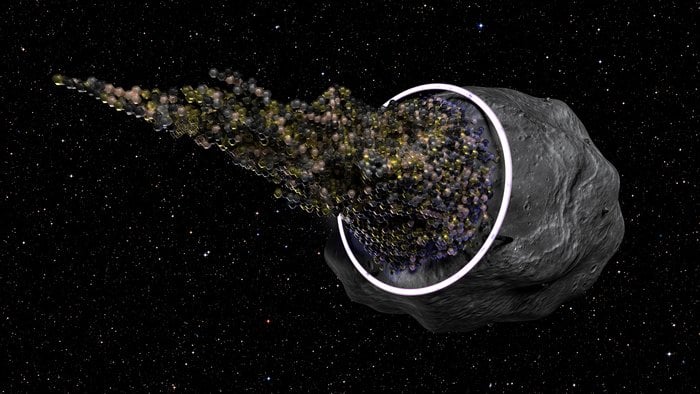It seems like the stuff of dreams, the idea that humanity will one day venture beyond the Solar System and become an interstellar species. Who knows? Given enough time and the right technology (and assuming there's not some serious competition), we might even be able to colonize the entire Milky Way galaxy someday. And while this seems like a far-off prospect at best, it makes sense to contemplate what a process like this would entail.
That's what a think tank from the ESA's Advanced Concepts Team (ACT) managed to do recently. As part of the tenth annual Global Trajectory Optimization Competition (GOTC X), they created a simulation that showed how humanity could optimally colonize the Milky Way. This was in keeping with the competition's theme of " Settlers of the Galaxy ", which challenged teams to find the most energy-efficient way of settling as many star systems as possible.
This year's GTOC ran from May 21st to June 12th, 2019. As with previous competitions, it was hosted by the NASA Jet Propulsion Laboratory's (JPL) Mission Design and Navigation section. The challenge this year was to contemplate a future where humanity had the necessary technology and the drive to settle throughout the Milky Way galaxy.
Specifically, the teams were challenged find ways to settle 100,000 systems that are considered suitable for settlement, in as uniform a distribution as possible while using as little propulsive velocity change as possible. This challenge (aka. "The Problem") was defined as follows:
Central to the competition was the idea that advancements would be made by this point in the future that would give humans the ability to live in space like never before. This would allow for the creation of self-reliant settler vessels capable of travel through space for hundreds of thousands of generations (i.e. " generation ships "), making it possible for humans to travel to and settle in other star systems.
This process would start by fanning out from the Solar System and proceed from other systems once they are settled. Teams that submitted early were awarded bonus points based on the presumption that humanity is depleting the Solar System of its natural resources. As a result, expansion to other star systems is essential and time is of the essence.
The video that illustrates their model for galactic settlement (shown above) was presented at a workshop on interstellar exploration hosted by the ACT - which took place last week (from Thurs to Friday, June 20th to 21st). The topics discussed included designing "worldships" (another name for generation ship) that could travel between stars, their internal workings, directed-energy propulsion, and self-healing materials.
To watch the video, you might suspect that you were looking at was a multicolored-fireworks display. But in fact, what you are seeing is human generation ships leaving the Solar System (denoted in yellow) and traveling from one end of the Milky Way galaxy to the other. The blue and green streaks represent the initial expansion outwards, which are followed by red streaks that denote missions sent from other star systems.
By the time the simulation ends, the Perseus and Carina-Sagitarrius Arms of the Milky Way galaxy are teeming with human settlements. On the other side of the galaxy, much of the Scutus-Centaurus Arm is also well-peopled and colonized. In that respect, fireworks would be an accurate metaphor for describing the explosive growth of humanity as a galactic civilization.
The winning team was made up of representatives from four major Chinese research organizations. These included the College of Aerospace Science and Engineering; the National University of Defense Technology in Changsha; the State Key Laboratory of Astronautic Dynamics and the Xi'an Satellite Control Center. There animation can be seen here.
Further Reading: ESA*, NASA/JPL*
 Universe Today
Universe Today

